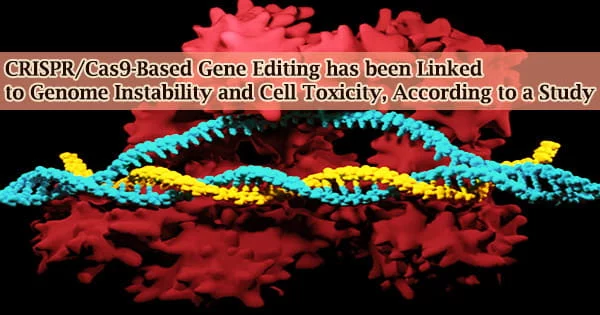The 2020 Nobel Prize in Chemistry was awarded to Jennifer A. Doudna and Emmanuelle Charpentier for developing the widely utilized and incredibly precise genome editing method known as CRISPR/Cas9. CRISPR, also referred to as “genetic scissors,” enables the insertion of the desired DNA sequence into (almost) any location of the genome, thereby altering or inactivating a gene.
This method is widely utilized in biomedical research, and several CRISPR-based medicines are currently undergoing clinical trials for the treatment of illnesses such as HIV, some types of cancer, and human blood problems.
According to new research, CRISPR gene editing can result in cell toxicity and genomic instability depending on the region of the human genome that is being edited. The research was conducted at IRB Barcelona under the direction of ICREA researcher Dr. Fran Supek.
The DNA sequence close to the editing location and different epigenetic variables in the neighborhood dictates this undesirable effect, which is mediated by the key tumour suppressor protein p53.
The most popular CRISPR library created for human cells was examined by researchers in the Genome Data Science lab using computational approaches. They found 3,300 targeted locations that exhibit substantial hazardous effects. Additionally, according to the study, which was published in Nature Communications, 15% of human genes have at least one hazardous editing location.
“Our work addresses an important issue with TP53-associated toxicity of Cas9, which was a matter of some controversy recently, and it also provides guidelines on how to sidestep the problem. Avoiding editing in these “risky” spots would not only make CRISPR editing more efficient but, more importantly, safer,” Dr. Supek explains.
This unwanted consequence might incur a risk of genomic instability, which is highly undesirable in the context of ex vivo CRISPR therapies, in which cells from a patient are edited in the lab and reintroduced back into the patient. We hope that our study provides some guidelines on how to design safer CRISPR reagents, and encourages further research into this issue.
Dr. Fran Supek
A specific gene can be edited in a variety of positions. “The regions of the gene that are important for regulation or have certain epigenetic markers are the ones most likely to trigger the p53 response and should, therefore, be avoided as a general recommendation,” says Dr. Miguel-Martin Álvarez, a lead researcher on the study.
p53-mediated toxicity and tumorigenesis
The protein p53 is referred to as the genome’s protector. In order to stop the cells from multiplying and spreading the “mistakes” in their DNA, it identifies DNA damage, causes the cells to stop replicating, and may even trigger programmed cell death. As a result, p53 is at the root of a built-in defense system against cancer and other issues caused by DNA damage.
Both DNA strands must frequently be cut during CRISPR gene editing. In some circumstances, this alteration can cause a p53 reaction, which can cause modified cells to be “tagged” as damaged and therefore removed, decreasing the effectiveness of the genome editing procedure.
The fundamental issue with p53 and gene editing, however, is that cells that resist CRISPR editing may do so specifically due to dysfunctional p53 activity. In other words, these cells might not be as good in spotting DNA damage and/or marking cells for programmed death.
Because these cell types are more likely to accumulate further mutations and have unstable genomes, which increases the likelihood of developing malignancies, the gene editing process may end up favoring them.
“This unwanted consequence might incur a risk of genomic instability, which is highly undesirable in the context of ex vivo CRISPR therapies, in which cells from a patient are edited in the lab and reintroduced back into the patient. We hope that our study provides some guidelines on how to design safer CRISPR reagents, and encourages further research into this issue,” concludes Dr. Supek.
The European Research Council and the Spanish Ministry of Science and Innovation have provided funding for the investigation.





